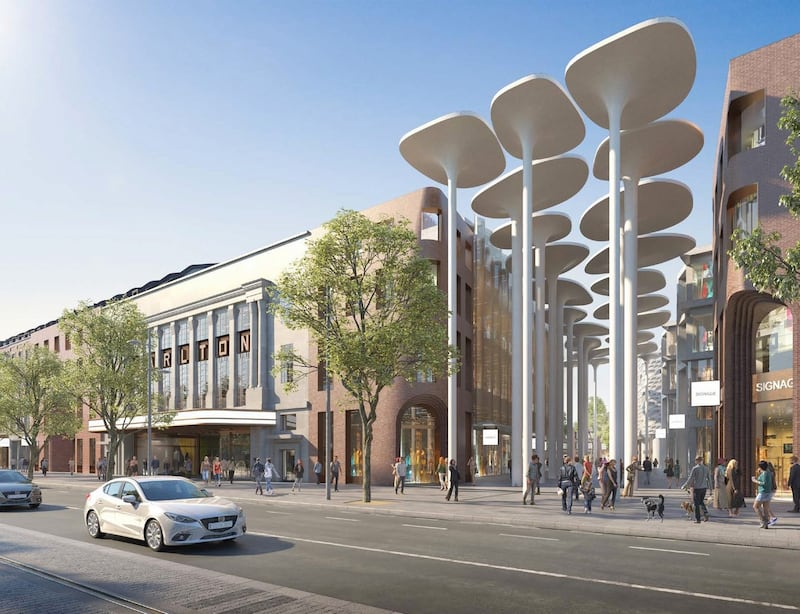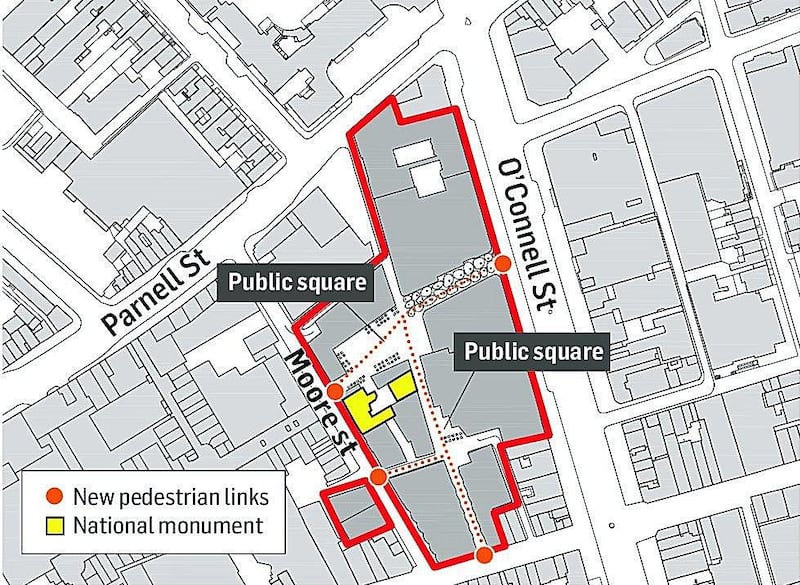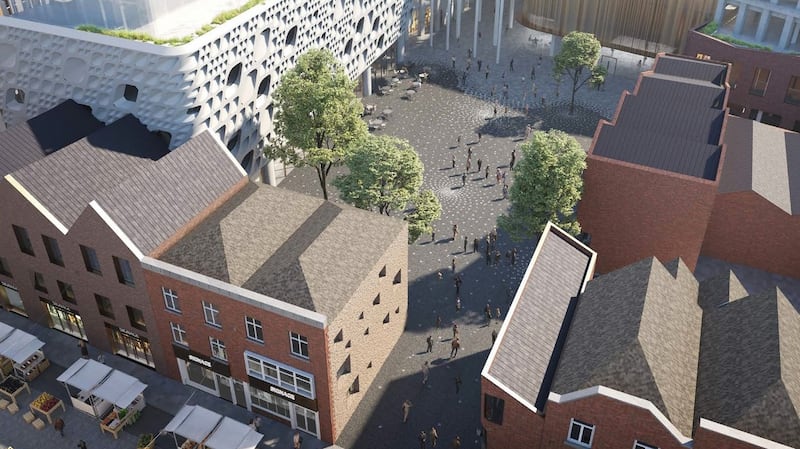O’Connell Street will be “re-established as Dublin’s pre-eminent street” and the “unique character and vibrancy” of Moore Street will be restored, under master plan proposals for a new urban quarter in the north inner city.
UK property group Hammerson has decide to scrap existing planning permission for the €1.25 billion "Dublin Central" shopping complex and instead seek fresh permission for an "open" retail, office, hotel and residential development on a site which stretches from O'Connell Street and Moore Street, to Henry Street and Parnell Street.
The failure to develop the six-acre site over several decades has meant Upper O’Connell Street and Moore Street has become increasingly dilapidated. The blight is particularly evident on the west side of O’Connell Street with a proliferation of amusement arcades, discount shops and derelict sites, one of which, beside the Carlton cinema, has been vacant for 40 years.
German architect Friedrich Ludewig of international firm Acme has produced designs that envisage the restoration of historic street patterns, building lines and scale. Unlike the previous enclosed shopping centre proposal, the new plans are for an open scheme with a new pedestrian street leading from O'Connell Street to Moore Street, opening to a large public square in the centre of the development.

A second “pocket square” will be located at the southern end of the site at the junction of Moore Lane and Henry place, currently used only as service streets for Moore Street and Henry Street, and largely marked by derelict buildings.
The art deco-style Carlton cinema, which opened in 1936 and closed in 1994, and has since been proposed for various uses including a national conference centre and then a new site for the Abbey Theatre, will have its facade restored.
However, it will not have a new lease of life as a cinema, and will instead be used for retail, most likely for the flag-ship store of the development.
A cinema will however be located in the northwestern part of the site, behind Conway’s pub on Parnell Street, a protected structure which will be restored and used as bar/restaurant.
The vacant lot beside the cinema is to be the new location of an underground MetroLink Station for O'Connell Street. This station was previously planned for the middle of the street, but the The National Transport Authority announced in March it was moving the stop to the Carlton site to avoid traffic disruption on O'Connell Street.

A new residential element has been added to the scheme, but at just 2,000sq m, compared with 23,500sq m of retail, 31,500sq m of office space and a 4,700sq m hotel, it is not likely to add significantly to the city’s stock of apartments, said Green Party Cllr Ciarán Cuffe.
“It is disappointing that the residential component represents only 2,000sq m of the 90,000sq m site. It would be more appropriate to provide for one-third of the proposal to be residential. This would provide ‘eyes on the street’ and assist in tackling the housing crisis.”
However, Mr Cuffe said he would have “cautious welcome” for the scheme which appeared “less invasive than previous proposals and retains more of the buildings in the surroundings of Moore Street”.

Hammerson said it wants to "restore the unique character and vibrancy" of the Moore Street markets and will "respect and enhance street market trading" in consultation with the stall holders and Dublin City Council.
It also wants to create a 1916 "historical trail" though the site which will "commemorate the 1916 Easter Rising events and locations on site". The State has plans to redevelop 14-17 Moore Street as a 1916 Rising Commemorative Centre. Hammerson will refurbish 10 Moore Street, and the facades of other pre-1916 buildings. Last year the Court of Appeal overturned a declaration that buildings on and around Moore Street, part of the Hammerson site, constituted a national monument following a case taken by the State.
While the plans are at “concept stage” and the individual buildings have yet to be architecturally designed, the master plan presents a striking image in the use of a canopy of tall lily-pad-like structures to shelter the new pedestrian street from the elements, which funnel rain internally, while maintaining an open feel to the street.
While this is the most dramatic visual element of the scheme, it is considerably more modest than the previous plan for a "park in the sky", a 35m high structure facing O'Connell Street topped by a sloping public park. Developer Joe O'Reilly's Chartered Land was granted permission for this element by the city council, but it was omitted by An Bord Pleanála from the final shopping complex proposal which eventually secured planning permission in 2010. In 2016 Hammerson secured an extension of that permission until 2022, but has decided to scrap the plans for the enclosed shopping complex.
















